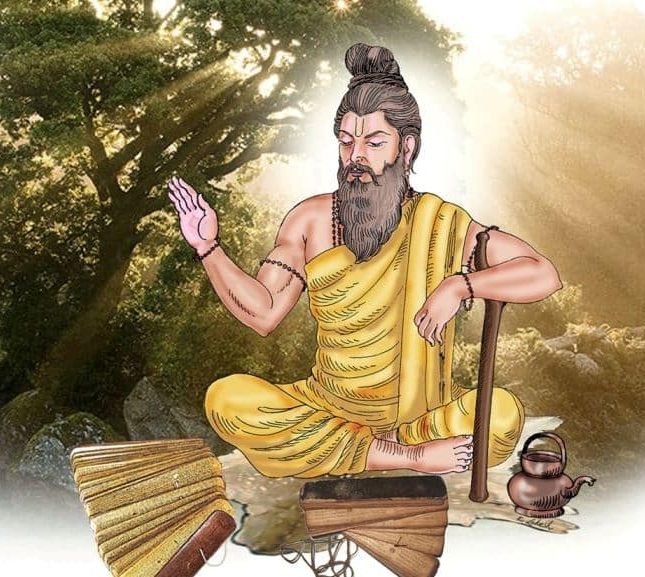GAUTAMA Indra seeing Ahalya, the wife of ascetic Gautama was allured. But (with the curse of Gautama) he had a thousand disgraceful marks on his body; then he repented in his mind. (Prabhati M. l, pp. 1343-44) Because of the punishment of a thousand disgraceful marks, Indra wept….. (Var RamkaU M. 3, Shalok M. l, p. 953) The wife of Gautama, who was tumed into a stone, •was liberated. (Gond Namdev, p. 874) It is recorded in Ramayana that Indra was guilty of the seduction of his Guru Gautama\’s wife Ahalya. He visited the Guru\’s house during his absence and assumed the form of Gautama. Ahalya suspected that it could not be her husband, who had gone to take a bath in the early hours of the morning.
But since the intruder was in the guise of Gautama himself, she yielded to his wishes. As Gautama, the sage, returned to his house, he found Indra there, therefore, in great rage, he cursed both Indra and his wife. Indra lost his manhood and had one thousand disgraceful marks on his body. Ahalya became a stone and was to be liberated, when Rama the incarnation of Vishnu would touch her. The moon, who was acting as a watchman of Indra, still has the blemish on his face caused by the impression of the wet towel of Gautama.Gautama was a great ascetic of his age. See : Ahalya and Indra .
References :
1. Kohli, Surindar Singh (ed), Dictionary of Mythological References in Guru Granth Sahib, 1993
Rishi Gautama, a revered sage in Hindu mythology, is celebrated for his wisdom, ascetic practices, and significant contributions to Vedic literature. Known for his role as a teacher and spiritual guide, Gautama’s legacy is intricately woven into ancient Indian traditions. His life and lessons, rooted in dharma (righteousness) and self-discipline, find parallels in the universal spiritual teachings of the Sikh scripture, Guru Granth Sahib.
Gautama in Hindu Mythology
Rishi Gautama is best known as one of the Sapta Rishis (seven great sages) and is credited with composing portions of the Rigveda. His ashram was a center of learning and spirituality, where seekers gathered to gain knowledge and insight. Gautama’s wife, Ahalya, is central to one of the most well-known episodes involving the sage.
The tale of Ahalya, as described in the Ramayana, revolves around themes of forgiveness, penance, and redemption. Ahalya is turned to stone as a result of a curse due to her involvement with Indra, but she is eventually liberated through the grace of Lord Rama. This narrative highlights Gautama’s adherence to dharma and the transformative power of divine grace.
Another significant contribution of Rishi Gautama is the creation of the “Gautama Dharma Sutra,” an important text that codifies societal and ethical guidelines. His teachings emphasize the principles of truth, non-violence, humility, and devotion to a higher purpose.
Quotes in Guru Granth Sahib
While Gautama himself is not explicitly mentioned in the Guru Granth Sahib, the scripture reflects themes closely aligned with his teachings. The Guru Granth Sahib emphasizes the importance of living a life of righteousness, self-discipline, and devotion—values that resonate deeply with Gautama’s philosophy.
- Dharma and Righteous Living: Both Gautama’s teachings and the Guru Granth Sahib underscore the significance of leading a virtuous life in harmony with moral and spiritual laws.
- Humility and Forgiveness: Gautama’s story, particularly in the context of Ahalya, emphasizes forgiveness and compassion, which are central themes in Sikh teachings as well.
- Devotion to the Divine: Like the hymns of the Guru Granth Sahib that praise complete surrender to the Divine, Gautama’s life exemplifies unwavering devotion to spiritual truth. Timeless Teachings
Rishi Gautama’s wisdom, rooted in dharma and spirituality, continues to inspire seekers of truth. The Guru Granth Sahib enriches these ideas by presenting universal messages of compassion, humility, and devotion. Together, they encourage individuals to rise above ego and illusion, dedicating themselves to a higher path of righteousness and enlightenment.



